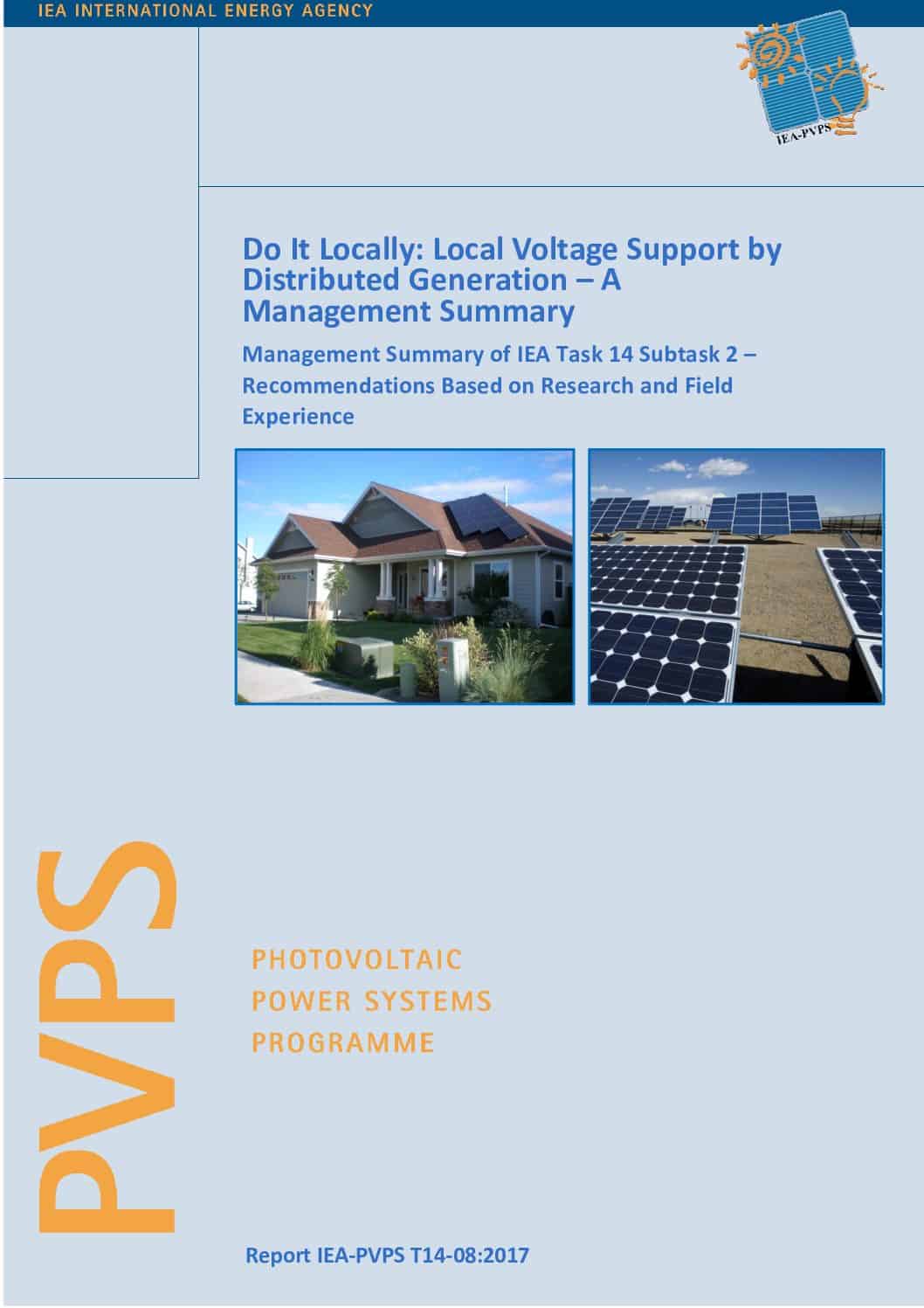This report presents an overview of research results and field experiences on the subject of local voltage support by distributed generators (DGs). The focus of this report is the German power supply system, which has experienced a significant photovoltaic (PV) expansion of approximately 36 GW within the last decade. Case study results from different countries like Belgium, Austria and the United States complement the findings on local voltage support by PV systems. A major PV integration challenge is the voltage regulation in distribution grids with a high PV penetration. Advanced PV inverter functions, like reactive power control or active power curtailment, can help to reduce the impact of PV feed-in on the local voltage magnitude. Nowadays, several countries demand reactive power and partly active power control capabilities from DGs in their grid codes and DG interconnection guidelines. Central control (coordinated control) approaches by DGs are not in the scope of this report. The addressed local control (autonomous control) strategies4 are for example:
- Fixed cosϕ control (Fixed power factor function)
- Cosϕ(P) control (Watt-Power factor function)
- Q(U) control (Volt-Var function)
- P(U) control (Volt-Watt function)
- 70% active power limitation (maximum generation limit function)
The term PV hosting capacity defines the maximum PV generation capacity that can be connected to a respective grid section while complying with the technical requirements of grid codes and guidelines. For example, in a German case study the maximum PV hosting capacity is analyzed for 17 real low-voltage grids. In these grids reactive power control can increase the PV hosting capacity in median by 70 % to 90 % compared to the case without PV reactive power control. The cost-benefit analysis identified significant cost saving potential for PV reactive power control compared to traditional grid reinforcement. Nevertheless, widespread use of local reactive power control by PV systems can have a significant impact on the reactive power demand of distributions grids, which might lead to additional grid losses or an additional need for reactive power compensators. Furthermore, the impact of PV reactive power control on existing voltage regulation schemes by the Distribution System Operator (DSO) or on the voltage stability in the distribution grid is analyzed and discussed in this report. Especially in this matter, the impact of reactive power control is highly sensitive to the applied reactive power control strategy.
Combined reactive power control and active power curtailment can further increase the PV hosting capacity and can be a cost effective measure to integrate a high share of PV generation. However, the related additional PV feed-in losses are also sensitive to the applied active power control strategy.
Finally, the report presents an overview on advantages and disadvantages for the different reactive power and active power control strategies, which can assist decision-making for the application of local voltage support by DG.
